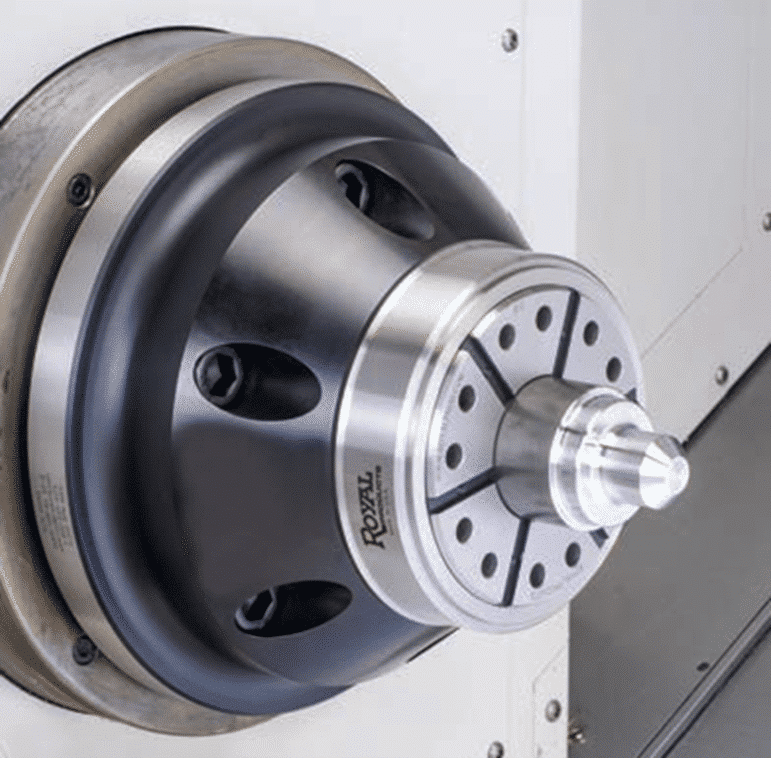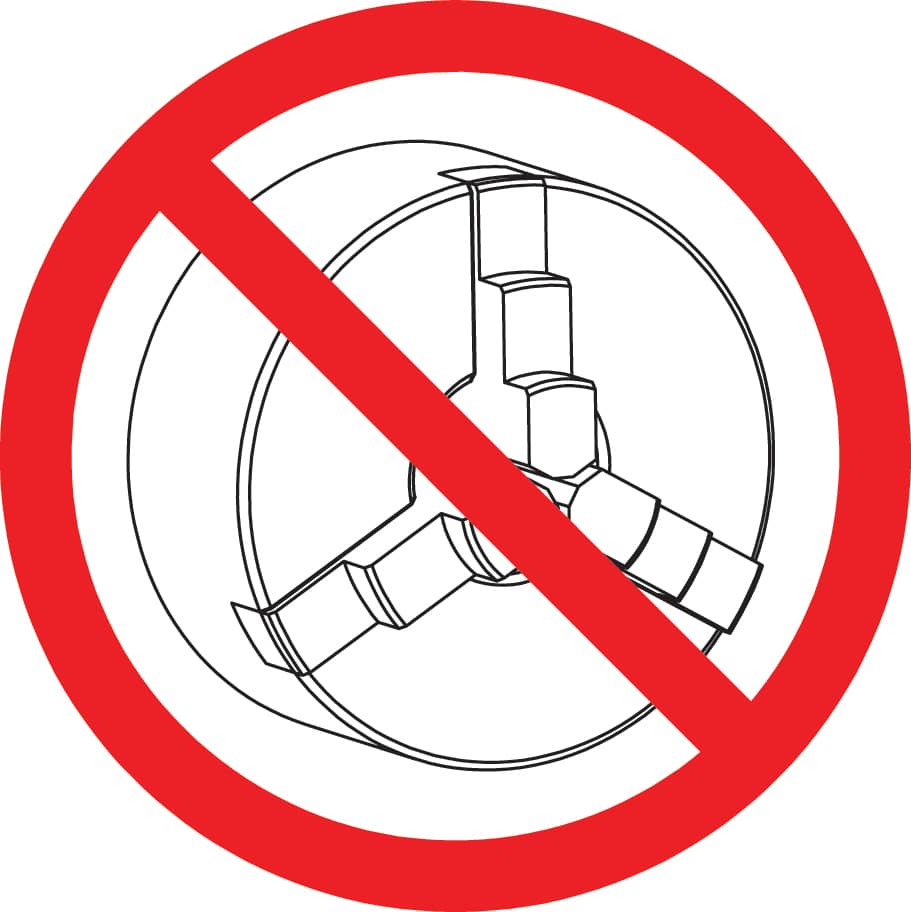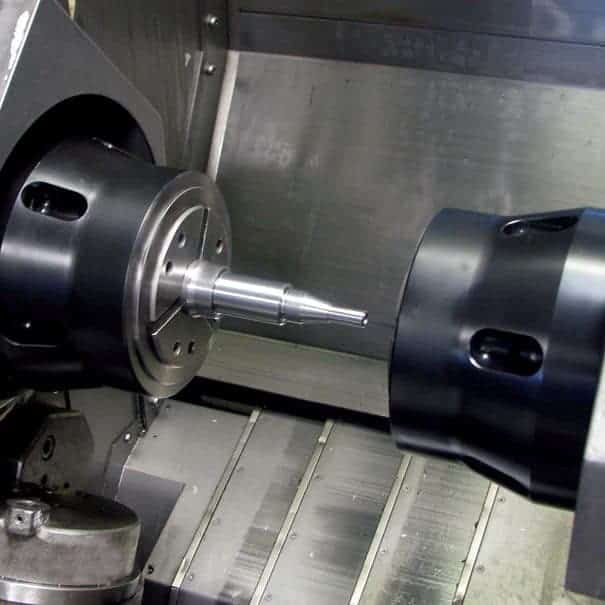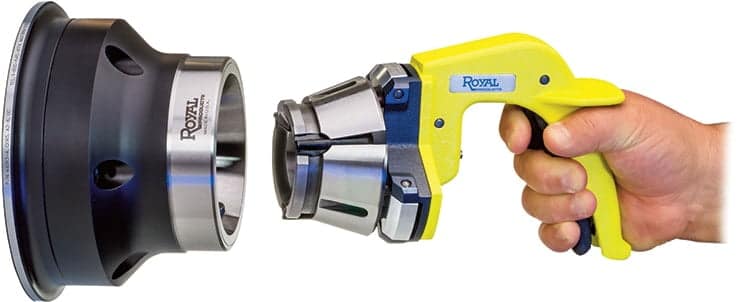Royal CNC Collet Chucks

Royal’s broad range of CNC Collet Chucks offers many advantages over traditional three-jaw lathe chucks – especially for workpieces under 4” diameter. Some of these advantages include:

- Superior tool clearance
- 360° workpiece contact
- Greater gripping force – particularly at high rpm
- Lightning-fast changeovers – no boring jaws
- Reduced mist production
Royal CNC Collet Chucks are available in two main styles – our Low-Profile series utilizes traditional 5C, 3J, and 16C spring-style collets, while our revolutionary Quick-Grip™ series offers ten-second collet changes, an industry-leading gripping range, and parallel-grip functionality for superior workpiece engagement and rigidity.
Royal CNC Collet Chucks are proudly made in USA and are the preferred choice of all major machine tool builders. Every Royal CNC Collet Chuck includes a custom-machined drawtube connector for hassle-free installation, and with hundreds of chucks, collets, and accessories always in stock, virtually all Royal CNC Collet Chucks ship the same day they are ordered!
When is a Collet Chuck a Better Choice than a Three-Jaw Chuck?

Bar Feeding
A collet chuck is almost always the best workholding choice for machines equipped with bar feeders. Collet chucks help minimize vibration, open and close faster than three-jaw chucks, and, most importantly, provide full 360° contact to ensure that the bar stock remains on centerline for accurate re-gripping after being advanced.
Small Diameter Work
Collet chucks are best suited for parts ranging in size from 1/16″ to 4″ in diameter because they offer much better tool clearance, can be run at higher speeds than jaw chucks, and provide superior grip force.
Short / Thin Parts
A collet chuck’s low-profile design provides better tool clearance and allows machining to take place very close to the chuck face. This ability to work closer to the chuck can also help prevent thin parts from sagging or bending.
High Speed Operation
Collet chucks are much less vulnerable to the negative effects of centrifugal force, enabling them to run at higher speeds while maintaining consistent grip force.
Reduced Setup Times
Changing a collet is much faster than changing chuck jaws, and there is no boring required. Collet chucks keep your machines making chips –and profits!
Pipe and Tube Work
The 360° contact provided by a collet distributes the gripping force evenly around the entire part circumference, reducing the risk of crushing or distorting thin-walled parts.
Odd Shaped Parts
Collets can be easily customized to hold odd-shaped or off-center parts. A wide selection of standard collets is readily available to handle round, square, and hex stock.
Better Tool Life
The paddlewheel-like shape of a 3-jaw chuck can deflect coolant before it reaches the cutting tool tip, shortening tool life, whereas the streamlined shape of a collet chuck enables precise coolant delivery. Collet chucks also produce significantly less mist than 3-jaw chucks.
What is the Difference Between a Pullback Chuck and an Accu-Length™ Chuck?

With a pullback collet chuck, closing the collet is accomplished by pulling it back into the chuck body, whereas with an Accu-Length™ chuck, the collet is rigidly fixed to the chuck body and a tapered sleeve pushes forward over the collet to compress it.
Using a pullback chuck will result in a slight variation in z-axis positioning of the workpiece. This happens due to the fact that as the collet draws back and closes down, it begins to grip the workpiece and pull it back too. Typically the movement is just a few thousandths of an inch, and remains consistent as long as the part diameter doesn’t vary.
This slight z-axis movement is often acceptable for first operation work and can be easily remedied with a facing cut. However, there are several situations where z-axis movement is not desirable. In these cases, using a Royal Accu‑Length™ collet chuck with dead length operation will protect against workpiece movement.
IMPORTANT – For machines with two spindles, it is always necessary for the secondary spindle (right-hand) to be equipped with an Accu-Length™ collet chuck, and it is strongly recommended that the main spindle (left-hand) use an Accu-Length™ chuck as well.

